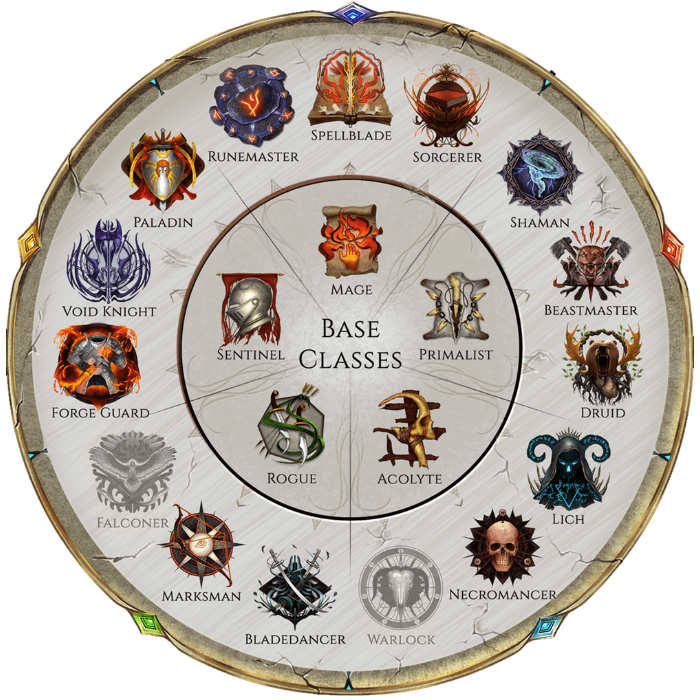Last Epoch Best Classes Tier List
Welcome to the realm of Last Epoch, where the choice of your character class can significantly impact your journey. In this article, we delve into the intricate details of Last Epoch’s best classes. We’ll dissect their strengths, weaknesses, and overall viability. Whether you’re a seasoned player seeking to optimize your build or a newcomer looking for the ideal class to start your adventure. Our Last Epoch Best Classes Tier List will be your guide to navigating the diverse landscapes of Eterra. Discover the classes that stand at the pinnacle of power. Embark on a journey towards mastery in Last Epoch. If you want to skip grind, you can buy Last Epoch Boosting from BoostingExperts.
Last Epoch Best Classes
In Last Epoch, there are five primary classes, each including three subclasses. We recommended to view the main five classes as overarching categories, with the subclasses serving as the specific classes within those categories. For instance, the Druid. If you wish to play it, consult the class wheel. The Druid is under the Primalist main class, and when creating your character, choose Primalist as your main class and the Druid as your Mastery or subclass. This clarification aims to ensure a clearer understanding of the class hierarchy in Last Epoch.
In Last Epoch, players start their journey as a base class, which later evolves into one of three Mastery Classes. These Masteries determine the skills, passives, and playstyles that characters will employ throughout their adventure.

Sentinel

Within the Sentinel class, there are three primary Masteries: the Paladin, the Void Knight, and the Forge Guard.
Paladin
Ranked in the A tier, the Paladin Mastery revolves around fire damage, including the ignite element and healing. Its bonuses boost fire, lightning, physical damage, and healing effects. Also, the Paladin features a unique mechanic enabling the scaling of adaptive spell damage while wearing a shield, facilitating a resilient spellcaster playstyle.
Void Knight
The Void Knight Mastery is positioned in the B tier. This Mastery specializes in void damage, uniquely being the only one with void support. A noteworthy feature of the Void Knight Mastery is its ability to generate echoes. These echoes replicate one of your skills shortly after its use. The Sentinel subclass offers one of the most powerful builds centered on void spells.
Forge Guard
Positioned in the B tier, the Forge Guard Mastery centers on physical damage, including the ailment bleed. Offering support for both two-handed, sword and board playstyles. Moreover, this Mastery’s bonuses are dedicated to defense through armor and resistance.
Mage

Within the Mage class, there are three primary Masteries: the Runemaster, the Spellblade, and the Sorcerer.
Runemaster
In the A tier, the Runemaster allows us to cast elemental skills that generate runes based on the skill’s elemental type. Using runic invocation, these runes can be expanded to choose the spell to cast. The resulting spell is determined by the combination of runes created by the elemental skills, considering the number of rune elemental types and their order. This system can generate a total of 40 distinct spells, providing nearly limitless possibilities from a single skill.
Spellblade
In the C tier, you’ll find the Spellblade, a distinctive melee-building spellcaster. With a variety of melee skills that synergize seamlessly with spells, the Spellblade combines both playstyles into a gratifying fusion. Specializing in fire, lightning, and cold damage, Spellblades offer superior board generation support compared to the Sorcerer, essential for their tendency to operate in melee range. Additionally, Spellblades excel in building up damage with one skill and delivering a massive burst using another.
Sorcerer
Ranked in the A tier, the Sorcerer excels as a typical spellcaster. This Mastery specializes in ranged spells, emphasizing significant elemental damage, particularly in fire, lightning and cold damage. The bonuses associated with this Mastery include increased mana and spell damage.
Acolyte

Within the Acolyte class, there are three primary Masteries: the Lich, the Necromancer, and the Warlock.
Lich
In the A tier, the Lich earns the title of the master of dark arts. Proficient in casting physical spells through blood magic, the Lich possesses expertise in necrotic and poison damage. Additionally, she excels in melee combat. A distinctive feature of this Mastery is the ability to sacrifice her own HP to enhance her power, creating a high-risk, high-reward playstyle. The bonuses associated with this Mastery grant increased damage when her health is low.
Necromancer
In the S tier, the Necromancer reigns supreme. With the ability to summon either a large army of single but powerful minions or sacrifice them for destructive effects, she offers versatile gameplay. The Necromancer can also buff her minions, encouraging a more active playstyle, especially for zoning builds. Her minions support a wide array of damage types, allowing for diverse builds. Furthermore, she can use her minions to enhance her own damage or survivability. The Mastery bonuses grant her more skeletons or skeleton Mages, along with increased minion damage.
Warlock
The Warlock is still in development. But we know that the Warlock is the master of the Forbidden Arts. He is a versatile and potent spellcaster, offering players the chance to delve into the dark arts and wield formidable magic against their foes.
Primalist

Within the Primalist class, there are three primary Masteries: the Shaman, the Beastmaster, and the Druid.
Shaman
Positioned in the C tier, the Shaman thrives in spellcasting, serving as a primary totem user. This mastery predominantly supports damage types related to cold and lightning, with a touch of physical skills. Utilizing totems, the Shaman can inflict direct damage, offer buffs to spells, melee skills, or even companions. The Mastery bonuses focus on reducing totem mana cast, providing attunement, and enhancing the Shaman’s elemental resistance while in control of the totem.
Beastmaster
Ranked in the B tier, the Beastmaster commands minions as loyal companions, and their loss is to be avoided at almost any cost. These companions possess their own active skills, accessible to the player when off cooldown. If a companion falls in combat, it can be revived. While any Primalist can utilize companions, the Beastmaster excels in this aspect, gaining access to more support and the ability to have multiple companions.
The Beastmaster also boasts strong support for physical and poison damage types. A distinctive mechanic of the Beastmaster lies in the “aspects,” special buffs that can be applied to both the Beastmaster and his companions through specific actions, adding a unique layer to the class’s gameplay.
Druid
Rogue

Within the Rogue class, there are three primary Masteries: the Bladedancer, the Marksman, and the Falconer.
Bladedancer
Marksman
Falconer
In conclusion, the Last Epoch Best Classes Tier List provides valuable insights into the diverse range of masteries available in the game. It’s important to consider your preferred playstyle, desired damage types, and overall goals when selecting a mastery. With Last Epoch continually evolving, mastering these classes will undoubtedly enhance your enjoyment and success in this epic journey. Explore, experiment, and uncover the mastery that best suits your adventure in the ever-expanding world of Last Epoch.






